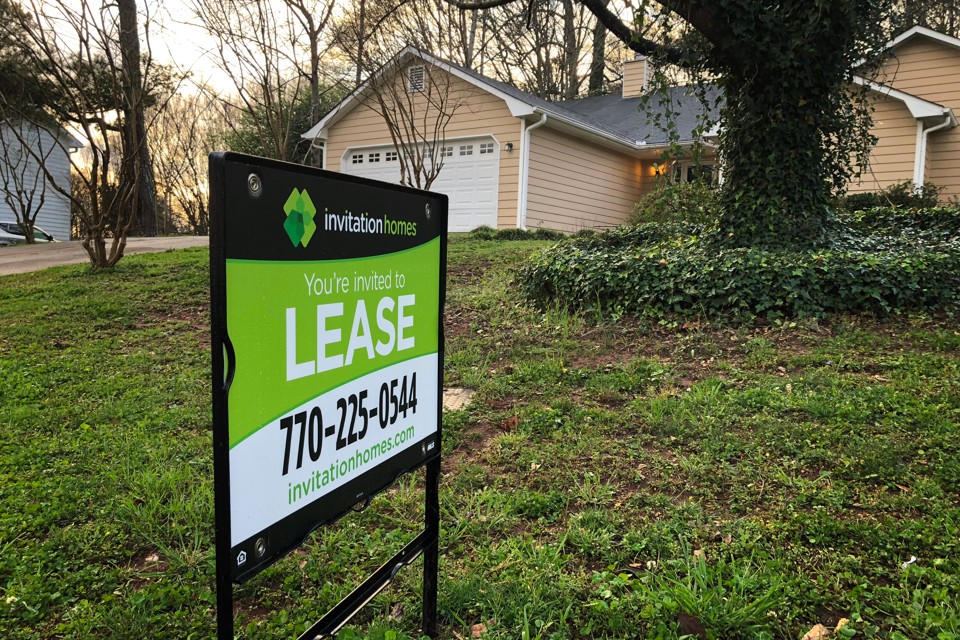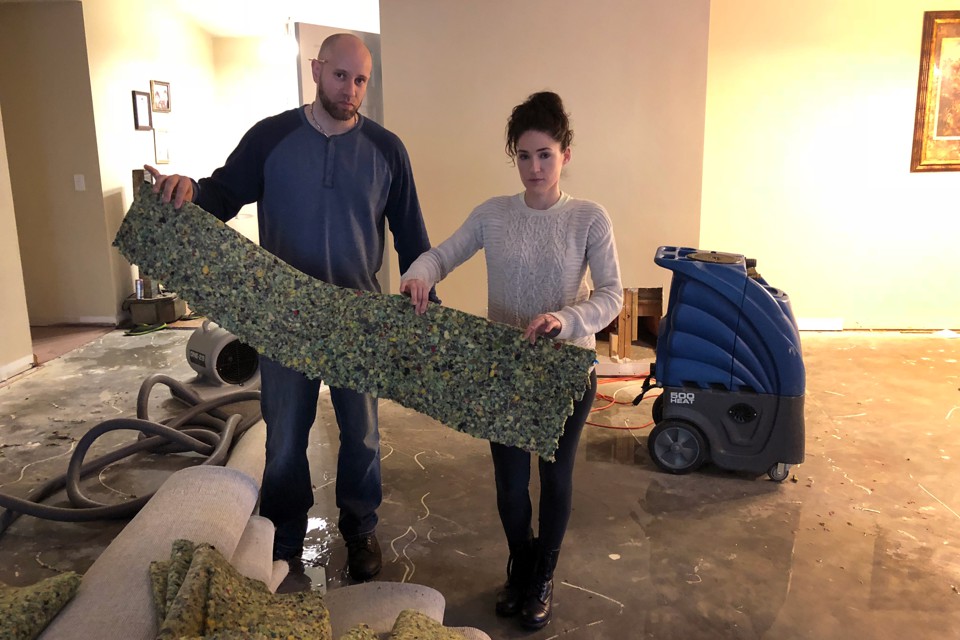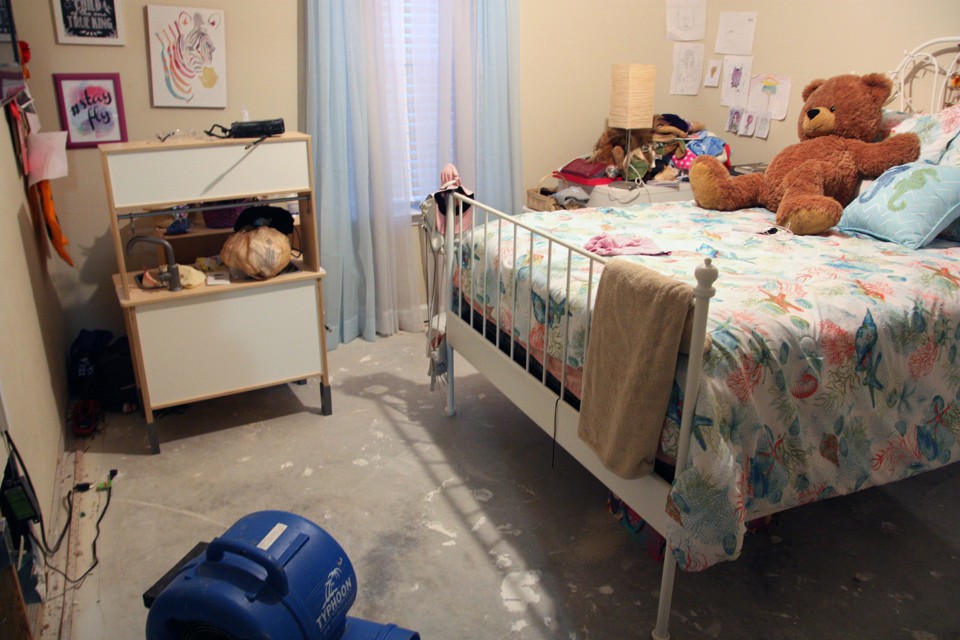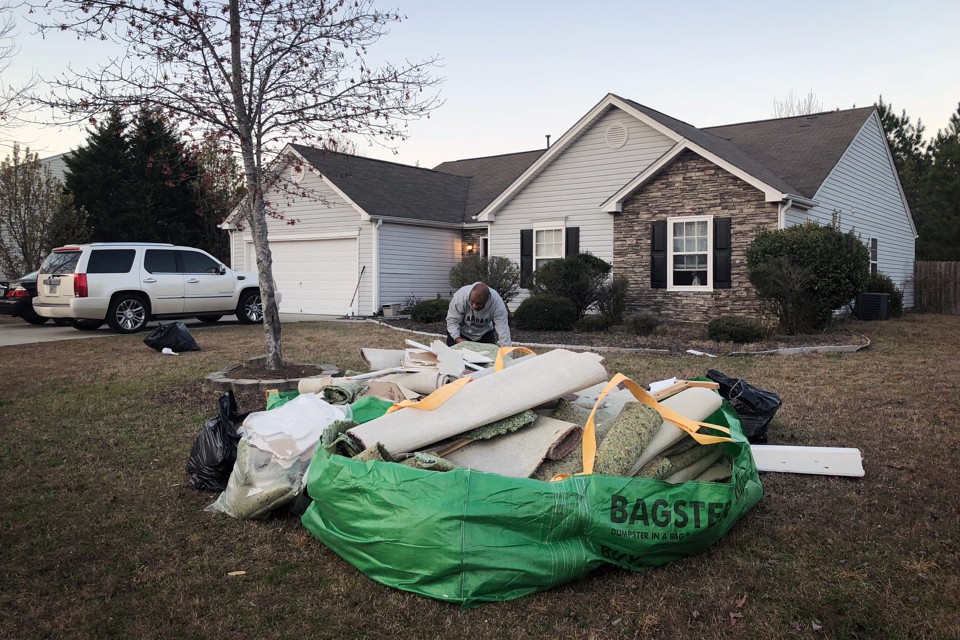When Wall Street Is Your Landlord
The Atlantic

In 2010, at the height of the foreclosure crisis, the federal government watched nervously as hundreds of thousands of families lost their homes. Empty houses blighted neighborhoods, their shades drawn, their yards overgrown. Without some kind of intervention, federal officials worried, the housing market would continue in its free fall, prices would keep dropping for existing homeowners, and the economic recovery, already tenuous, would be imperiled.
But who would fill these empty homes? Few Americans were in a buying mood, and for those who were, mortgages were harder to come by than they had been before the crash. So the government incentivized Wall Street to step in. In early 2012, it launched a pilot program that allowed private investors to easily purchase foreclosed homes by the hundreds from the government agency Fannie Mae. These new owners would then rent out the homes, creating more housing in areas heavily hit by foreclosures.
It worked. Between 2011 and 2017, some of the world’s largest private-equity groups and hedge funds, as well as other large investors, spent a combined $36 billion on more than 200,000 homes in ailing markets across the country. In one Atlanta zip code, they bought almost 90 percent of the 7,500 homes sold between January 2011 and June 2012; today, institutional investors own at least one in five single-family rentals in some parts of the metro area, according to Dan Immergluck, a professor at the Urban Studies Institute at Georgia State University. Some of the nation’s hardest-hit housing markets were finally stabilized.
The investors argued that they could be good landlords—better, in fact, than cash-strapped small-timers. According to Diane Tomb, the executive director of the National Rental Home Council, a trade group established in 2014, single-family rental companies “professionalized” a sector traditionally run by mom-and-pop landlords, bringing with them 24/7 responses to maintenance requests and a deep pool of capital they can spend on homes.
They also projected they could make money, which no one had done on a large scale in the home-rental business. “We wanted to rescue these neighborhoods and create a long-term, permanent income stream for our shareholders,” says Frederick Tuomi, who was until recently the president of Invitation Homes, which is now the largest single-family rental company in the nation. (Tuomi is currently on a temporary leave of absence to care for a family member.
But housing trends were on the side of the investors: America was becoming a renter nation. According to census data, between 2007 and 2017, the United States added less than 1 million households in owner-occupied homes, but 6.5 million in renter-occupied homes. Many families wanted to live in a spacious house in a good school district, but could no longer afford to do so as owners. The homeownership rate bottomed out at 62.9 percent in 2016, down from a high of 69 percent in 2005.
Read: The never-ending foreclosure
Of course, the trends that favored these new landlords were largely produced by a financial crisis that Wall Street had itself abetted. That some of the same investment firms that had played a part in the housing crisis were now poised to profit from it made for a dismal irony. But if the new companies could deliver on their promises of making home rentals easy, affordable, and worry-free, perhaps everyone could win: The companies could return a profit, the housing market could be shored up, and houses that had lain fallow after the crash could once again be happy homes.
In 2011, rene and Erica Valentin were living with their two young children in a small two-bedroom apartment in suburban New Jersey. They had been saving for years to buy a house. But then Rene, now 42, was laid off as a district manager at Best Buy, and the couple decided that the only way they would ever be able to afford to buy was in a cheaper market.
Erica, now 34, applied to be an engineer at AT&T in an Atlanta suburb. When she got the job, the family picked up and drove south, moving into a two-bedroom apartment near the city center. They pinched pennies as Rene’s job search stretched into its second year. By the time he finally found a position in 2014—again at Best Buy—the family still couldn’t afford to buy. But their daughter, Sophia, was about to enter first grade, and the Valentins wanted her in a good school district and not to have to share a room with her brother. So they decided to rent.
They settled on a 2200-square-foot house on a quiet street. From the outside, it didn’t look like much—vinyl siding, black shutters, brick detailing. But it had three bedrooms, two bathrooms, walk-in closets, and a large, fenced-in backyard, all for just $1,373 a month. Soon enough, they were installing a tire swing in the backyard, hanging art on the walls, and putting up curtains in the kids’ bedrooms—dark blue for Antonio, light blue for Sophia. They paid their rent using Waypoint’s online platform, impressed by how far technology had progressed from the days of dropping a check in the mail. The property wasn’t theirs, exactly, but they finally felt like they could settle down.
As the valentins were nesting, America’s new corporate landlords were looking for efficiencies. The companies set about standardizing flooring and appliances, which would, in theory, lower costs and make life easier on maintenance workers. They established centralized call centers to handle tenant communication, and installed smart locks so that potential renters and maintenance staff could let themselves in to look around or do repairs.
In 2015 alone, Colony American Homes merged with Starwood Waypoint Residential Trust, Cerberus Capital Management acquired more than 4,000 homes from BLT Homes, and American Homes 4 Rent said it was acquiring American Residential Properties in a $1.5 billion deal. By 2017, two major players, Invitation Homes and American Homes 4 Rent, controlled nearly 60 percent of the market.
On calls with investors, those two companies touted their cost-cutting measures, which often involved pushing responsibilities onto tenants. In 2016, Jack Corrigan, the chief operating officer of American Homes 4 Rent, told investors that the company hoped to reduce spending on repairs, maintenance, and “turn costs”—preparing a home for a new tenant—from $2,500 per home to $1,600. That same year, Colony Starwood cut property-management costs 25 percent from the previous year; one of its money-saving innovations was to use videos and chat software to show tenants how to fix minor problems, so they wouldn’t have to request repair staff for a clogged garbage disposal or a leaking toilet.
The obligation to repair their own rental wasn’t the only responsibility passed on to tenants. I reviewed one Colony Starwood lease from 2016; it was 34 pages long and specified that tenants were responsible for landscaping, “routine insect control,” replacing air filters in their central air systems once a month, repairing broken glass (regardless of how it was broken), and repairing and maintaining sewer and sink backups. American Homes 4 Rent started levying “trip charges” if maintenance staff were sent out to homes to assist with repairs that the tenants should have performed themselves, David Singelyn, the company CEO, explained at a 2015 investor forum. Some companies began requiring that tenants buy renter’s insurance to cover the property itself, rather than just their belongings, a clause lawyers in some states say is unenforceable.
Hanson said she was instructed by a supervisor not to answer the phone when certain tenants called. “Her response would be, ‘We’re not fixing that, just don’t call the tenant back,’” Hanson said of the supervisor. Hanson said she was fired when she reported the company to OSHA because she worried that the homes were in such poor shape that the conditions for the maintenance staff she supervised were dangerous.

Another former Waypoint leasing agent, in Florida, who also spoke on the condition of anonymity because she is still in the real-estate field, told me that the company stopped replacing shower-curtain rods and changing locks when tenants moved out. When Waypoint learned that it was spending $5 million annually on paint, local managers were told to just touch up the walls rather than repaint them, giving the interiors a splotchy, unfinished appearance, she said. At one point, a mandate came down from a field manager that the company was going to do everything it could do not to return security deposits to tenants. “It wasn’t a company policy, and you will never find it in writing, but it was a verbal thing passed down to field project managers,” she said.
Rene and erica valentin’s problems with their rental home began almost immediately. Their pipes would periodically break, sending a stream of water onto their living-room carpet. Sometimes the water would be boiling hot—their kids once stepped in it and burned their feet, they told me. Getting someone to come fix the pipes was always a production. Erica said she would call, or file a complaint online, and it would take days, sometimes weeks, before she received a response. Repair workers would come and replace small sections of broken pipe, but Waypoint never investigated why the problem persisted. They didn’t replace the soggy carpet, either; a faint mildew smell started to permeate the house. The contractors Waypoint sent seemed, to the Valentins, unqualified—one didn’t have a car and had to call his mother to drive him to Home Depot to pick up a part. “You would expect this type of behavior from a one-person landlord who’s a jerk, but a big multimillion-dollar company—how do you treat your tenants like that?” Erica said. “They have the money to fix things.”
But despite the new ownership, the flooding continued. One Sunday afternoon in March 2018, they returned home and saw water rushing out of their house. They found their home submerged in four inches of water and their bulldog, Bam Bam, whimpering in a corner. They called Invitation and waited, moving their soggy couch to the garage, piling ruined children’s books and teddy bears on tables, wondering why the issue had never been fixed after dozens of calls.
The problem, it turned out, was more significant than a bad section of pipe. The house’s pipes had been the subject of a class-action lawsuit because they broke so frequently, and the pressure regulator in the hot-water heater was faulty, sending too much water into an already fragile system. They learned this from a contracting company that Invitation dispatched to diagnose—but not to fix—the problem. When Rene got back to the house from a trip to pick up a pizza, the contractors were packing up their equipment. Invitation was looking for someone to do it for a cheaper price, they told him.

Living in a decaying house was taking a toll on the family. The mold was aggravating their son’s allergies; the dust made him feel even worse. The day after the flood, his face began to swell. Erica started to cry as she realized that her efforts to find a good home had landed them in a place that was making her family sick. But she felt powerless to do anything about it.
The valentins’ story is not unique. The tenants I spoke with said that their landlords ignored their requests for repairs and kept homes in hazardous condition. Many said they’d received eviction notices even if they’d paid their rent on time.
These negative experiences occurred across the industry. In 2016, LaSonia Kimball moved out of the Covington, Georgia, home she rented from Colony Starwood and awaited the return of her $750 security deposit. Instead, she was charged $4,297.40 for repairs such as hedge trimming and interior painting. She took the company to court to get it to drop the fees and give her back her security deposit, which it ultimately did, though it did not admit wrongdoing. (Invitation told me that Kimball’s deposit was retained “due to damages beyond normal wear and tear” but that it was eventually returned.)
Timothy and Michelle Poorman’s Invitation Homes rental in McDonough, Georgia, burned down in December 2017; according to a complaint filed in state court in August, a fire investigator found that the chimney, which was installed by Invitation Homes, had lacked necessary parts and had not been correctly ventilated. The Poormans are currently suing for compensation for their lost property. (Invitation said that it could not comment on pending litigation but that it disputes the allegations in the Poormans’ lawsuit.)
Waypoint Homes never did a move-in inspection after Carla Brown and her family moved into their home in Marietta, Georgia; her porch collapsed when she was standing on it and she broke her ankle. (She settled with the company.)
The air-conditioning in Jennifer Callahan’s Florida home was wired incorrectly; when she complained that it was unsafe for her four-month-old baby to be in the house, where temperatures could reach 100 degrees, the American Homes 4 Rent office told her she was a “drama queen” and did not send someone to repair it for a week and a half, she told me. American Homes 4 Rent did not return multiple requests for comment.
Tenants also say that rather than taking advantage of economies of scale, the rental companies are taking advantage of their clients, pumping them for fines and fees at every turn. This impression is backed up by the financial reports of the companies themselves. American Homes 4 Rent increased the amount of money it collected from “tenant charge-backs” (essentially billing tenants for repairs after they move out) by more than 1000 percent between 2014 and 2018, according to company earnings reports, though it only grew the number of homes it owned by 70 percent over that period. In some states, Invitation Homes keeps the utilities in its name, and charges tenants a monthly $10.99 “utility service fee,” which is in addition to the cost of water, gas, and electricity. The company increased its “other property income”—the amount it collected from resident reimbursement for utilities, service charges, and other fees—by 114 percent between the first nine months of 2017 and the first nine months of 2018, despite only growing the number of homes it owned by 71 percent. On an earnings call in 2017, Invitation Homes’ then-CEO John Bartling said that “automated charges to residents” drove profits in the quarter, leading to a 22 percent increase in “other income.”
La Shay Harvey, a tenant of Invitation Homes in Covington, Georgia, told me she was charged a $95 late fee for missing rent one month even though she had paid her rent through Invitation Homes’ online portal, which had malfunctioned. She dropped off a money order the next day, but the company refused to accept the payment, eventually filing an eviction notice and sending her a bill for a $200 legal fee, a $75 insufficient funds fee, a $144 filing fee, and $199 in late fees, plus back rent, although she says she had tried to pay the rent. She took the company to court and won, but she will never forget coming home one day to see her daughter crying because of the eviction notice affixed to the front door. (Invitation disputes Harvey’s account, saying she has been late paying rent eight times since 2017.)
Houses require a lot of work under the best of conditions. Small-time landlords can do a poor job of managing properties. The tenant isn’t always right. But the volume of complaints, and the common themes among them—maintenance requests ignored, corners cut, costs passed on to the renter—suggest that the rental companies have failed to meet the pledge they made back when the incentives first kicked in: to make rental housing a business that benefits both tenants and investors. Tenants have filed more than 600 complaints about Invitation Homes and nearly 800 complaints about American Homes 4 Rent through the Better Business Bureau. (Together, the two companies own about 126,000 homes.) In a Facebook group of unhappy tenants, daily posts suggest that the companies continue to fail to respond to some long-reported problems.
Invitation Homes receives a 4.3 out of 5 from its tenants in internal surveys, the company said, adding that its business model depends on keeping people happy so that they’ll stay in their home, reducing turnover. Tuomi told me that as Invitation acquires more homes, it adds employees, stimulating local economies.
In May, Young, Invitation’s chief operating officer, took me on a tour of a few of its empty rental properties in the Sacramento suburb of Roseville. They were on quiet suburban streets, and they had wall-to-wall carpeting, evenly painted white walls, and spacious backyards. Young showed me how local staff go through an extensive inspection list before new families move into a home—turning on taps, checking power outlets, running the garbage disposal.

If investors were once wary of the single-family rental business, they aren’t any longer. The share price of American Homes 4 Rent was up 40 percent between August of 2013 and August of 2018. Investors such as Morgan Stanley and BlackRock increased their holdings in Invitation Homes in the third quarter of 2018. By December, the eight ratings firms covering the company had each given Invitation a “buy” rating, indicating that they believe it’s undervalued.
Single-family rental companies are now “darlings” of the real-estate sector, according to Haendel St. Juste, an analyst at Mizuho Securities who covers the industry. “You have this proof of concept now,” he told me. “They’ve exceeded expectations.” When I reached out to Sam Zell, the Chicago real-estate investor who had been skeptical of single-family rentals in the past, he, too, had changed his tune. “Technology has disrupted the real estate industry,” he said in a statement, “and the single-family rental sector may be a case in which resulting efficiencies have a big impact.”
Single-family rental companies are continuing to expand, suggesting that, rather than a temporary response to a generational crisis in the housing market, institutional ownership of single-family rentals may be a new fixture of the real-estate industry. Invitation Homes spent more than $200 million on new homes in the first nine months of 2018. As the supply of cheap homes for sale evaporates, American Homes 4 Rent has started building new homes to add to its stock.

Read: A house you can buy, but never own
In some areas, renters say that it is difficult to find properties that aren’t owned by the big institutional investors. Heather Bryant’s Invitation Homes property in suburban Georgia had unreliable air-conditioning, a sewage system that frequently backed up, and a rodent problem that the company refused to address, she told me. But she and her husband kept re-signing the lease. “So many of the rental houses in Georgia are owned by them that it is nearly impossible to find someone who owns privately,” she told me. Iyesha Stringer moved out of one Colony American house in the Atlanta area, disgusted with the company because it had withheld 60 percent of her deposit and didn’t fix mold or flooding issues in the house. “I said I’d never rent from a big company again,” she told me. She moved into another property, only to find out a few months later that Colony American had bought the house and was going to start managing it. It’s now managed by Invitation Homes.
After four years of dealing with Invitation Homes, Erica and Rene Valentin decided they couldn’t take it anymore. When I visited them three days after the flood, they were still wearing face masks because their house was full of dust. Exposed nails lined the floor, and many of their belongings were stacked in the garage, one of the few places that had stayed dry. Desperate to get out, the family started to look at properties to buy. But home prices were on the rise, partly because of the presence of rental companies and institutional investors, which snapped up more than 5,000 homes in the Atlanta area in 2017 alone, according to Amherst Capital.
They eventually found a home they thought they could afford at $204,000. When they applied for a loan, however, they were denied. They had significant credit-card debt, and all their years of renting had deprived them of the wealth accumulation that has typically attended homeownership. They finally bought in Dacula, another suburb in growing Gwinnett County, for a little more than $300,000, but only after Rene took out a loan against his car to come up with the down payment. Now, they’re squeaking by on their monthly payments, but they know that one lost job could lead them to financial ruin. They like to say they found their dream home, but had to go through hell to get it.
In a sense, they were lucky. The Federal Reserve began raising interest rates in 2015, and it is getting costlier to borrow money. In Atlanta, home prices are rising three times as quickly as yearly increases in wages in the region.
That means many families will be forced to stay in institutional rentals. Instead of building wealth, they’ll continue to fork over rent money every month to companies looking for more ways to increase rents and fees.
Drive through the neighborhoods ravaged by the recession, and they may look back to normal. Once-empty homes are full of families, their lawns mowed, their lights on. But inside, these homes are different. They’re inhabited by renters, not owners. These families may live in a nice house and send their kids to a good school, but they don’t have independence, or the financial security that comes with owning your own home. A decade after being all but destroyed, they’ve yet to escape the crisis’s long shadow.







Follow Us!